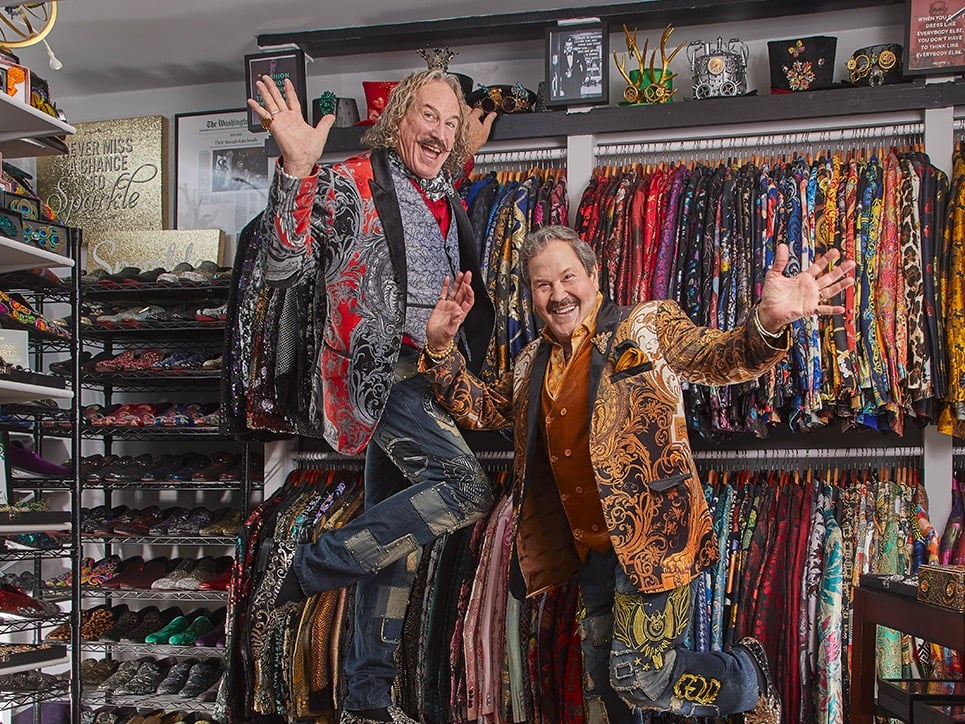Style > Beauty > Great Hair
Worrying is in my DNA. So while others change hair color the way Cameron Diaz changes boyfriends, I ponder the what-ifs of hair dye. Like, what if all those studies linking hair dye to lymphoma pan out?
Although the FDA says there is no connection between hair dye and cancer and points to studies that support this, other research over the years suggests differently. Some studies have shown a link between dye and blood cancers, others a link to bladder cancer.
Jacqueline Kennedy Onassis died of lymphoma after decades of dyeing her hair a deep brunette (research suggests the darker the color, the higher the risk). Was there a connection? The FDA would say probably not—and Jackie also was a smoker—but scads of women seemed to think so: For months after her 1994 death, Manhattan salons saw a dip in clients wanting to wash that gray right out of their hair.
Years later, there still isn’t a definitive answer. And millions of men and women color their hair without complications. Still, for health-obsessed types like me, the question “to dye or not to dye” is a quandary.
Fortunately, some salons now use products with fewer or lower concentrations of chemicals—peroxide, ammonia, and PPD are the big three—and there are some Food and Drug Administration guidelines for those still concerned.
Aveda dyes, used at the many Aveda salons in the area, generally have lower percentages of chemicals than do conventional dyes, according to Ellen Maguire, a spokesperson at Aveda headquarters in New York.
Mildest is the semipermanent Full Spectrum Deposit-Only Color, which lasts about eight weeks. It’s ammonia-free and has the lowest percentage (1 percent) of peroxide and other coloring chemicals.
Other dyes used at Aveda—for highlights, for lightening, and for a more dramatic color change—have higher amounts of chemicals, 3 to 7 percent. Some Aveda salons use non-Aveda products as well as their own line, so if you’re after one of the lower-chemical dyes, make that clear to the colorist.
Toka salon, which has locations in Georgetown (3521 Prospect St., NW; 202-333-5133) and downtown DC (801 Pennsylvania Ave., NW; 202-628-5133), also offers a semipermanent ammonia-free dye called Chi. According to owner Nuri Yurt, the amount of peroxide used depends on how light the client wants to go. This is the dye he recommends for pregnant women who want to color their hair, because it has no PPD and no odor.
In Fairfax, Comfort & Joy Wellness Spa (9514-A Main St.; 703-425-8800) uses hair dye with lower levels of ammonia and no peroxide. It also has no odor. Owner Julie Smalfelt calls it “the best we can find at the moment for safety and performance.”
Besides offering a measure of comfort to worriers, these gentler dyes may be better for your hair. “In general, any time a product can be used with less-harsh substances, the better,” says DC dermatologist Tina Alster.
No matter what salon you go to or what kind of dye you choose, the FDA offers some guidelines for those concerned about risks. They include not leaving dye on the hair longer than necessary, rinsing thoroughly, and delaying coloring until later in life when hair starts to turn gray.
Researchers also advise avoiding darker shades of dye in favor of reds, blonds, and light browns. One study suggested that risk increases with frequency of dyeing, so you might stretch out visits to the colorist. Lowlighting, where sections of hair are wrapped in foil similar to the way they are during highlighting—so the dye has less or no contact with the scalp—is another option for minimizing potential risk.
Semipermanent dyes, research suggests, are safer than permanent, although semipermanent can lift color only a shade or two or cover gray. Depending on how much gray you have and how resistant it is to dye, semipermanent might not cover all of it.
As for me, I now wait at least seven or eight weeks between dye jobs and—depending on how flush I’m feeling and who can schedule me quickest—frequent either the Georgetown Aveda (1325 Wisconsin Ave., NW; 202-965-1325), where my colorist uses Aveda’s semipermanent dye ($80 without blow-dry), or Toka for the odorless Chi color ($90 without blow-dry). I’m happy with the results of both, although I have to say that because the dye is semipermanent and eventually washes out—quicker if I shampoo a lot—strands of gray start peeking through at five weeks. (With permanent dye, the color remains and you just have to worry about roots.) But who cares about a little gray as long as I can sleep nights?

















